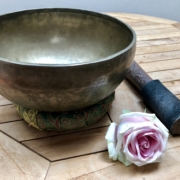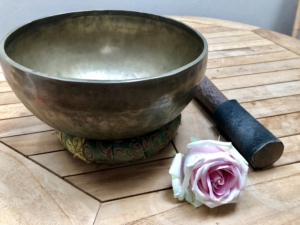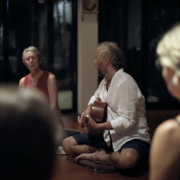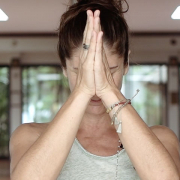 https://samahitaretreat.com/wp-content/uploads/2023/11/IMG_1290-2-scaled.jpg
1920
2560
Kirsten Mia
http://samahitaretreat.com/wp-content/uploads/2024/01/samahita-logo-v2.svg
Kirsten Mia2023-11-21 21:09:402023-11-21 21:09:40Music makes the world go round!
https://samahitaretreat.com/wp-content/uploads/2023/11/IMG_1290-2-scaled.jpg
1920
2560
Kirsten Mia
http://samahitaretreat.com/wp-content/uploads/2024/01/samahita-logo-v2.svg
Kirsten Mia2023-11-21 21:09:402023-11-21 21:09:40Music makes the world go round!Music makes the world go round!
No matter who you are, what language you speak or where you come from, music is a Universal language that we can all understand, and enjoy. Music is as old as humanity itself and may have even begun before we began to create languages. It’s difficult for archeologists and historians to pinpoint as prehistoric instruments were made from soft materials like reeds, wood and animal skins and haven’t survived, the oldest being a flute made from bone. So, what is the function of music? Why has it survived and continued to evolve alongside humanity? In today’s blog I will shed a little more light on the magic of music and sound and how it contributes to our overall wellbeing.
A brief history of music
So when did humans start to play music and why? Where did it start and what were the first instruments created? We listen to music everyday and it’s such a big part of our lives, memories, traditions, cultures, it brings people together! Some suggest that music helped create and form society itself. We all have a different idea of what constitutes sounds being called “music”, for example, I may consider a mother humming to her baby music, but you may not. Aside from that, the first music to have been created was likely singing, using the voice and then rhythm, created by hand clapping or sticks and stones being tapped together. Some of the oldest instruments found are flutes made from bone which date back to about 40 000 yrs ago. Simpler instruments like drums, shakers and rattles are thought to have existed before that, however being made of weaker more biodegradable materials, have not survived.
Our tribal hunter gatherer ancestors played music and danced around the fire before a hunt to bring people into a cohesive group, and after to enjoy the success of the hunt together, for entertainment, happiness. Flutes are thought to have been used to attract birds for hunting, for survival. Drums were used in sacrifices and military processions. Music was played to Kings and Queens in courts and castles. It has been shared amongst peoples through exploration and the trade routes, instruments and melodies evolving over the ages as new sounds were discovered. Music forms a big part of ritual and religions. Music keeps workers happy when doing repetitive or boring work, thus increasing productivity.
Music and Yoga
In the Indus valley about 3500 years ago, the Vedas: 4 “books of knowledge” were created and are regarded by Hindus as the sacred foundation of their religion. The Vedas embrace a multitude of texts and interpretations in ancient Sanskrit comprised of poetry, hymns, philosophical dialogue, rituals, myths, mantra and musical arrangements in 4 parts: the Rig, Yajur, Sama and Athar Vedas. Originally passed down orally and preserved by Brahmin priests chanting the verses in a very specific way. To ensure that the sound of each word remains unaltered, practitioners are taught from childhood complex recitation techniques that are based on tonal accents, a unique manner of pronouncing each letter and specific speech combinations.
Mantra is a form of meditation using a sound, word, or phrase recited silently or aloud and are often combined with breath and rhythm. At its core, it harnesses the inexplicable, inseparable human connection to sound and has been purposefully composed to produce a certain effect on the mind and the body. Chanting is a deep devotional practice (bhakti) to be done with care and respect of the culture from which it comes. When the correct technique is used, chanting can help to alleviate anxiety and stress and improve one’s mood. Humming, like when practicing Brahmari (bee breath) or chanting Om can boost the production of nitric oxide in the body which helps regulate the nervous, immune, and cardiovascular systems. This in turn, can help increase blood flow and promote muscle relaxation.
Sound and wellbeing
Sound has long been used by ancient peoples to heal and explore altered states of consciousness. Aborigines used the didgeridoo over 40 000 years ago as a sound healing instrument. Tibetan singing bowls have long been used in spiritual ceremonies. Sound and mantra meditation is a form of focused awareness type of meditation. One kind that has become more popular is called “sound baths”, which uses Tibetan/quartz singing bowls, gongs, bells, tuning forks and voice to guide the listener. These practices show how sound manifests not only through hearing but through tactile physical vibrations and frequencies. Although science is still catching up to understanding how sound heals, sound-based vibration treatment has been shown to improve stress, anxiety, pain from arthritis, fibromyalgia, stiffness, and increases blood circulation and lowers blood pressure.
Binaural Beats and Solfeggio frequencies
Sounds emit a frequency which is measured in Hertz (Hz). These frequencies are said to have different effects on our body, mind and emotions. The human brain is essentially an electrical device, with different tasks and emotional states generating various frequencies. There are 5 widely recognized brainwaves (gamma, beta, delta, theta, alpha), each having a distinct purpose in helping us how to think, behave, move and process information. If our physiology, diet or environment causes an over or underproduction of a certain brainwave, it can alter the balance of our bodies and induce many negative effects such as insomnia, anger, stress, learning difficulties or anxiety. This is why it’s key to optimize our brains for a better wave balance, rather than aiming to increase or decrease a particular one.
Solfeggio frequencies make up a 6-tone music scale, which was used in religious music of the 10th century, first introduced by Benedictine monk Guido d’Arezzo, and are most commonly associated with the Gregorian chants. They were lost over time and were rediscovered by Dr Joseph Puleo in the 1970’s. Solfeggio frequencies are widely used today in sound therapy. (They also relate to the chakras/energy centres within the body)
- 396 Hz – Associated with Liberating Guilt and Fear
- 417 Hz – Associated with Undoing Situations and Facilitating Change
- 528 Hz – Associated with Transformation and Miracles (DNA Repair)
- 639 Hz – Associated with Connecting/Relationships
- 741 Hz – Associated with Expression/Solutions
- 852 Hz – Associated with Returning to Spiritual Order
Binaural Beats involve playing two slightly different frequencies simultaneously, creating a perceived third frequency that impacts brainwave activity. Used in relaxation, meditation, and focus enhancement and can induce states conducive to astral projections and lucid dreaming.
The crescendo
Music influences the limbic system of the brain through pitch and rhythm, affecting our emotions, feelings and sensations. Ancient cultures understood the power of rhythm, harmonics and tone. Music is vibration, and everything in nature is vibrating, resonating at different frequencies. So, sounds played at specific frequencies with the right intention, have the power to effect healing. When it comes to your health and wellbeing, you could certainly benefit from exploring some of these sound healing modalities like listening to Binaural beats before bed or trying brainwave entrainment like what we offer here at Samahita on our Brain Health Upgrade program or joining the weekly gong/sound meditation. As new research continues, it will be exciting to see the potential impact of future sound technologies and how they will evolve in entertainment, retail, healthcare and beyond! For now though, simply consider the kind of music you listen to while commuting to the office, when you’re working out, practicing yoga, working or relaxing. The impact of your musical choices will have an effect on you, so notice these differences and continue to explore the magic of music!
References:
https://en.wikipedia.org/wiki/History_of_music
https://www.sciencedaily.com/releases/2017/06/170620093153.htm
https://www.musicianwave.com/history-of-music/
https://www.healthline.com/health/sound-healing
https://thehumancondition.com/sound-healing-therapy/
https://mindeasy.com/the-9-solfeggio-frequencies-and-their-benefits/
https://www.mindvibrations.com/solfeggio-frequencies/
https://ich.unesco.org/en/RL/tradition-of-vedic-chanting-00062
https://www.healthline.com/health/mind-body/mantras-for-anxiety
https://lucid.me/blog/5-brainwaves-delta-theta-alpha-beta-gamma/
More from the Samahita Blog







